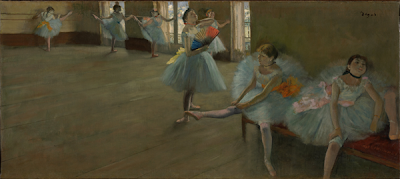Supposing the Marx Brothers had got hold of The Marriage of Figaro? It would have been perfect for them: Groucho as the Count, Chico as Figaro and Harpo as Cherubino, aided and abetted by Margaret Dumont as Marcellina and Kitty Carlisle as Susanna. Of course, they didn't. Yet...just look at this poster for A Night at the Opera. There's Susanna on the left, the Count behind her, Figaro taking her hand, Cherubino dreaming alongside...
It's no coincidence. The Marx Brothers, Fawlty Towers and The Marriage of Figaro all share the same root: Commedia dell'Arte. The Count, Basil and Groucho could be seen as derivatives of Pantalone, Chico and Figaro as Harlequin or Pulcinella, Susanna and Polly as Columbine, Harpo and Cherubino as Pierrot, while Fawlty Towers's Manuel is straight from the 'Zanni' character - the immigrant worker - and Sybil is, in certain ways, not all that far from Mozart's Countess...
It's perhaps one of the strengths of Glyndebourne's much-vaunted new production of Le nozze di Figaro, directed by Michael Grandage, that through a series of apparently zany juxtapositions it makes clear the archetypal, timeless nature of its drama - and the connections it leaves in the brain keep clicking into place for days afterwards.
It's a tad startling at first. The scene outside the mansion that accompanies the overture is relatively timeless - hustle, bustle, cleaning and gardening - and it's only when the Count and Countess swing into view inside a magnificent red vintage sportscar that we twig we're in the sixties or early seventies. The sets throughout are so Sevillian that they could be the Alcazar itself (pictured, left - almost certainly the model for the final scene in the garden...)
A medieval Moorish palace; 18th-century music on period instruments; action in an era in which menswear was seriously naff. Yet Grandage focuses intensely on the relationships and their nuances - which could have been taking place five centuries ago or last week. We live, we die, but the nature of love doesn't change. Strange how such an apparently post-modern approach with supposedly clashing eras delivers this indication so much better than the old Glyndebourne production by Graham Vick, apparently set in a rehearsal studio and now often referred to as "the one with the radiators". The stumbling block is, of course, the 'droit du seigneur' - all we can do about that is suspend disbelief.
The highlight of a fine cast was in many ways Sally Matthews's Countess. Her voice and her artistry just keep on growing. Now, equipped with considerable amplitude, a wider vibrato and terrific emotional intensity, she sounds almost Violetta-eque (though there's no actual sign of her singing Traviata any time soon). Lydia Teuscher's ideal Susanna ran her a close second, becoming better and better as the evening went by. Luxury casting, too, for Marcellina - Anne Murray, no less; and Don Basilio - Alan Oke, who despite popping up to fabulous effect in everything from Mozart to Anna Nicole, remains a bizarrely well-kept secret on the British opera scene. He should be better recognised as the consummate star he is, for his warm tenor tones, his magnificent acting and the best diction on stage.
Plaudits all round to the remaining cast, and if the Count appeared unconvincing from time to time, that was not the fault of the excellent Norwegian baritone Audun Iversen, but more that his costuming made it difficult to take him seriously.
At the helm was Robin Ticciati, crown prince of Glyndebourne - he takes over in two years' time when Vladimir Jurowski moves on to pastures new. Young he may be, but this was a thoroughly personal statement. The tempi are characterful and not too fast; there's enough space around the rhythms to hear everything fully; and from time to time the whole ensemble combined to produce a few moments of quiet and radiant tenderness: true Mozart magic.
The OAE did everyone proud, though I can't help wondering whether the decision to play at a pitch of A=430 is all that useful. It may have been the nature of the wind instruments of the correct time and place, but it isn't necessarily the nature of singers of today. During the recitatives, several of them were starting to drift up the teeniest notch, during the unaccompanied passages, towards the level to which they are presumably more accustomed, especially in the early part of the opera (it settled as the work progressed). Perhaps there are now apps to help singers to prepare with tweaked tuning, but you can't practise your recits with a bog-standard piano if everything has to be a quarter-tone flat. If the woodwind sounded truly revelatory, that would be another matter. But they don't.
On balance, then, a beautiful and fascinating evening in which the marriage of Figaro to this legendary tradition adds an enriching dimension. I'm going to clock off now, because otherwise we are going to end up matching the Ring Cycle characters with Fawlty and Harpo and co, and then goodness knows what will happen.
